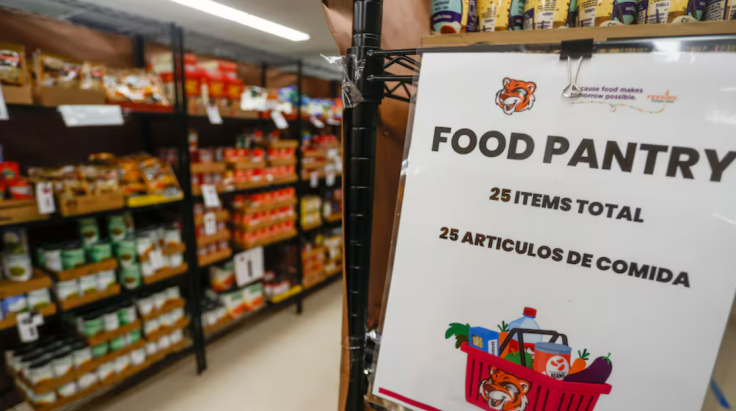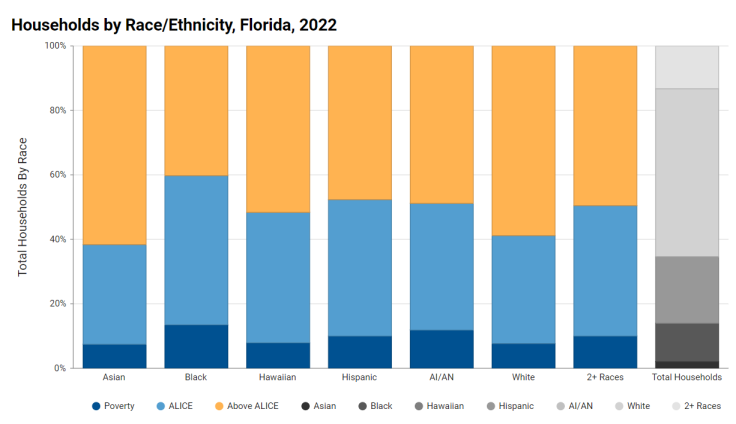
Nearly half of all Florida households are facing financial hardships, struggling to afford basic necessities such as food, rent and transportation.
A recent report by the nonprofit United Way showed in its annual ALICE report that about 46% of the state's households make less than what it takes to live comfortably in their local communities' economy.
ALICE, an acronym that stands for "Asset Limited, Income Constrained, Employed" shows that homes below or just above the poverty line are forced to make tough choices that have long-term consequences for their families and communities.
The study used data from 2022 and revealed that 1.1 million households are below the poverty line, while an additional 2.9 million meet the ALICE criteria. Despite an increase in wages for low-paying jobs, the cost of living across the state has also gone up, leaving millions of people living paycheck to paycheck.
According to a report from the Economic Policy Institute in March, low-wage workers had a 12.1% wage increase from 2019 through 2023. But even with the increases, low-paid workers still receive wages that are inadequate to meet most families' basic needs such as housing, child care, food, transportation and health care.
This is not a new trend, as the number of households living below the poverty line in Florida has seen a consistent increase over the past decade. From 2010 to 2022, households living below the poverty line in Florida grew by 8%, while ALICE households grew by 27%.
"If all you focus on is the labor market, then yeah, the economy looks great," said Michael Snipes, an economist at the University of South Florida. "But that doesn't really get into the daily lives of pretty much everybody."
The COVID-19 pandemic had a significant toll on families living near the poverty line and the ALICE threshold and, with less purchasing power, Floridians have had to cut back on leisure spending and even some essentials.
When it comes to race and ethnicity, Latinos are the minority with the highest number of households either below the poverty line or the ALICE threshold. More than 200,000 Latino households are below the poverty line and a little over 850,000 of them fall into the asset limited, income constrained, employed criteria.

The cost of living varies from county to county, but those costs are still virtually unaffordable as most places require households to make more than $80,000 for a family of four to stay above ALICE. According to the United Way Household Survival Budget, which is based on updated research conducted from public sources, it costs approximately $90,912 for a family of four (infant & toddler) to live comfortably in Central Florida. That is a similar cost for people wanting to live and work in Northeast Florida ($84,612) while people in the Southeast part of the state need to make more than $90,000 for the same family of four.
In 2022, household costs in every county in Florida were well above the Federal Poverty Level of $13,590 for a single adult and $27,750 for a family of four.
© 2024 Latin Times. All rights reserved. Do not reproduce without permission.







